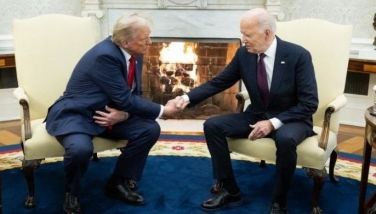A lifetime of perks in UAE help cushion wealth gap
UMM AL-QUWAIN — The United Arab Emirates contains the world's tallest building, an artificial indoor ski slope and man-made islands shaped like the world. Dubai's fleet of police cars includes a $2.5 million Bugatti Veyron and a $500,000 Lamborghini Aventador.
Look past the blinding glitz, though, and you discover a gulf separating the elite and their riches from most Emiratis. Yet in contrast to much of the world, a note of complaint is seldom heard here, and the reason is simple: Most Emiratis live lives of comfort that they owe to a bounty of perks and benefits from the government.
The welfare system, built more than four decades ago under Abu Dhabi's Sheik Zayed bin Sultan Al Nahyan, helped forge long-standing political loyalty.
"We came from this hard life, but because of this man — may God rest his soul — we now have a good, beautiful life," said 60-year-old Jumaa al-Shami, who lives in the northern emirate of Umm al-Quwain.
The question is how long it will last. Officials and economists warn that the lavish government spending that has long sustained a robust Emirati middle class could eventually be curtailed. Analysts say the United Arab Emirates' economic viability requires guiding more Emiratis into self-sustaining private businesses and weaning them from the state's openhanded patronage.
The government benefits that Emiratis have long enjoyed would be unthinkable in most of the world: Tax-free income. Free high-quality health care. Subsidized fuel. Generous government-funded retirement plans. Access to land to build homes with interest-free loans. Free higher education, even when pursued abroad.
To ease marriage costs, the government gives Emirati men 70,000 dirhams ($19,000) when they marry an Emirati woman. A debt settlement fund provides a one-time bailout to entrepreneurs who need it. On some occasions, the UAE's rulers have paid the debts of Emirati nationals ahead of major holidays.
The welfare system emerged when seven emirates joined to form the UAE under Sheik Zayed's leadership. Lifting Emiratis from poverty through a lifetime of aid coincided with transforming the UAE from a nation of disparate fishing villages into one of the world's leading investment and commercial hubs.
"The federal government is a huge welfare society and welfare state," said Abdulkhaleq Abdullah, a professor of political science at Emirates University. "This is a fact of life, and people appreciate that."
The UAE's three most developed emirates — Abu Dhabi, Dubai and Sharjah — have managed to transform themselves into sparkling metropolises. Until recently, the four others — Umm al-Quwain, Fujairah, Ras al-Khaimah and Ajman — still had dirt roads and endured electricity outages and subpar health care facilities. Even with gaping disparities among the seven emirates, revenue from Abu Dhabi's vast oil reserves tends to flow across the country.
Nearly 90 percent of Emiratis who work are employed by the government, which provides long-term job security along with far more disposable income than workers in most other countries receive.
Increasingly, though, the government appears intent on scaling back its support. As part of that effort, the UAE has embarked on a plan to encourage the private sector to allocate training and jobs for Emiratis who would otherwise look to the government.
Yet throughout the oil-rich Gulf Arab countries, the need for jobs is outpacing available work. The International Monetary Fund says that out of 1.6 million youths in Saudi Arabia, Bahrain, Oman, Kuwait, Qatar and the United Arab Emirates who will enter the workforce by 2018, 1 million could fail to find jobs.
"The key challenge to the UAE is to find the incentives for the local labor to join the private sector," said George Naufal, an economics professor at the American University of Sharjah.
With most Gulf states propelled by high birth rates, the collective cost of government benefits is accelerating.
"Think about it in terms of a father hinting at his children that it is time for them to be independent and make their own economic path," Naufal said.
It won't come without hardship.
Without government support for housing and school fees for children, the number of Emiratis living on less than 80 dirhams ($22) a day would rise by 21 percent in Dubai and would double in Sharjah, according to a study conducted in 2009 by the Dubai Economic Council.
When street protests erupted in other areas of the Middle East in 2011, the crown prince of Abu Dhabi pledged $1.6 billion to upgrade the electrical and water systems of the less-developed northern emirates.
It was an acknowledgement of the destabilization that a sizable wealth gap can kindle — and the role of government-backed spending in preventing such disparities from igniting social upheavals. The welfare system here has helped reinforce political loyalty.
Khalaf Al Hammadi, director general of the Abu Dhabi Retirement Pensions and Benefits Fund, said that up to $545 million a year is spent on 13,500 pensioners and beneficiaries in Abu Dhabi alone.
"We do not have feelings of fear or insecurities about experiencing a financial crisis or that one will retire and the government will not stick to its promises," Al Hammadi said. "The government is there assisting people."
- Latest
- Trending






























